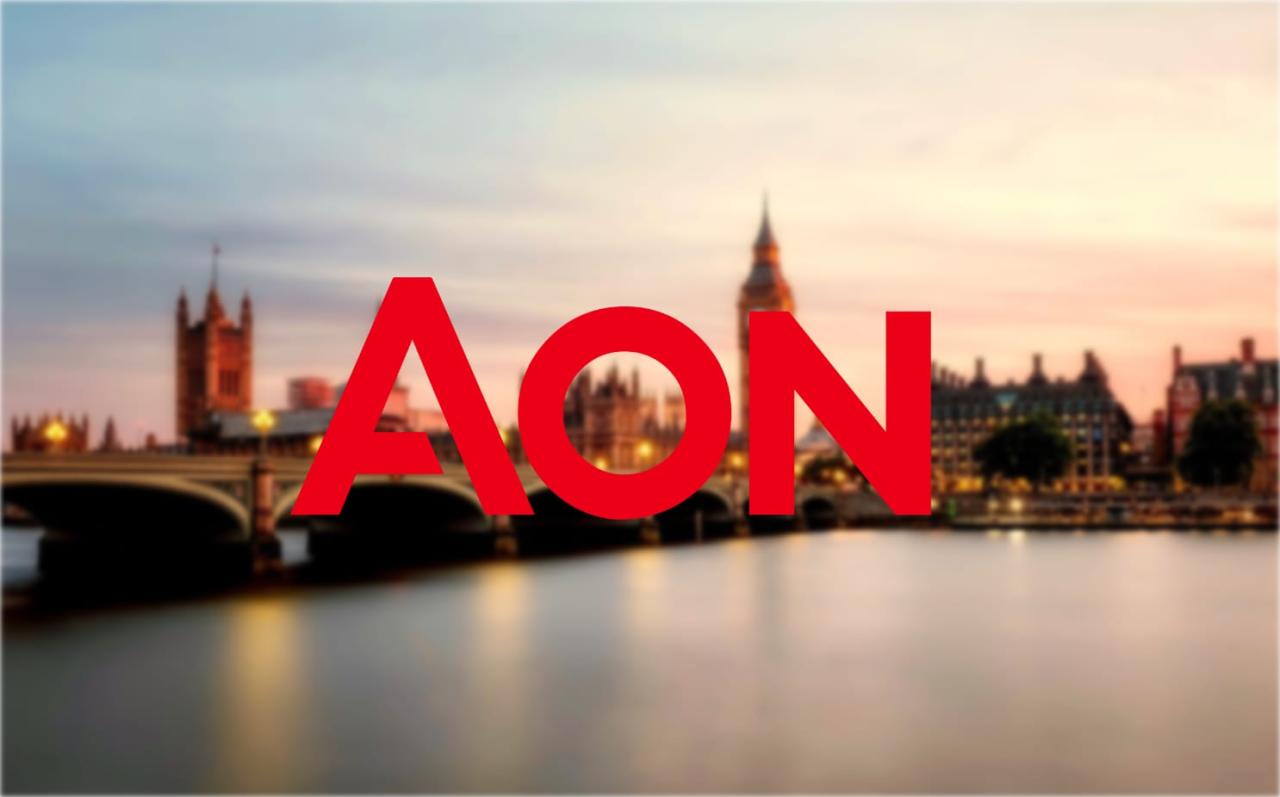Aon travel insurance offers a wide range of plans designed to protect your trip, no matter where you’re going or how long you’ll be gone. From basic coverage for medical emergencies to comprehensive plans that include baggage loss, trip cancellations, and more, Aon tailors its insurance to fit various travel styles and budgets. Whether you’re a solo backpacker, a family on vacation, or a business traveler, understanding the specifics of Aon’s offerings is key to ensuring a worry-free adventure.
This guide will break down Aon’s travel insurance options, helping you compare plans, understand the claims process, and see how Aon stacks up against competitors. We’ll cover everything from policy exclusions to customer reviews, empowering you to make an informed decision about your travel protection.
Claim Process and Customer Service

Making a claim with Aon travel insurance is straightforward, designed to minimize stress during an unexpected event. We understand that dealing with travel disruptions can be frustrating, so we’ve streamlined the process to be as efficient and supportive as possible. This section details the steps involved and how to access our customer service.
So, you’re planning a trip? Awesome! Before you pack your bags, remember travel insurance is key. Check out Aon travel insurance for comprehensive coverage. They’ve got options to suit different budgets and trip lengths. And if you’re looking for a different provider or want to compare prices, you might also want to browse Aon travel insurance – sometimes different websites offer slightly different deals.
Don’t leave home without it!
Aon prioritizes a smooth and efficient claims process. We aim to make submitting a claim as simple as possible, so you can focus on resolving your travel issues. Our customer service team is available through multiple channels to assist you every step of the way.
Claim Filing Steps
Filing a claim with Aon typically involves these key steps. Remember to always refer to your specific policy documents for detailed instructions and coverage limits.
- Report the incident: As soon as possible after the covered event (e.g., flight cancellation, medical emergency), contact Aon to report the incident. This initial notification is crucial for initiating the claims process.
- Gather necessary documentation: Collect all relevant documents supporting your claim. This might include flight itineraries, medical bills, police reports, receipts for additional expenses, and any other pertinent information.
- Submit your claim: Submit your claim through Aon’s online portal, by email, or by phone. The online portal is often the quickest and most convenient method, allowing you to track your claim’s progress.
- Provide additional information: Aon may request additional information or documentation to process your claim. Respond promptly to these requests to expedite the process.
- Review and receive payment: Once Aon reviews your claim and supporting documentation, they will notify you of their decision. If approved, you will receive your payment according to the terms of your policy.
Customer Service Channels, Aon travel insurance
Aon offers various customer service channels to ensure accessibility and convenience for policyholders. Each channel offers a different level of immediate response, allowing you to choose the best option for your needs.
- Phone Support: Aon provides a dedicated phone number for claims and general inquiries. Representatives are available during specified business hours to answer questions and guide you through the process.
- Email Support: You can also contact Aon via email. While response times might be slightly longer than phone support, email allows for detailed inquiries and provides a written record of your communication.
- Online Portal: The online portal is a user-friendly platform where you can submit claims, track their progress, access policy documents, and find FAQs. This self-service option provides immediate access to information and is often the fastest way to manage your policy.
Hypothetical Claim Scenario
Imagine a scenario where a traveler’s flight is cancelled due to unforeseen circumstances, resulting in additional hotel and meal expenses. The traveler had purchased comprehensive travel insurance through Aon. They would first report the flight cancellation to Aon via the online portal, attaching their flight itinerary and confirmation of the cancellation. They would then upload receipts for the hotel and meals incurred due to the delay.
Aon would review the documentation, verify the coverage under the policy, and process the claim for reimbursement, according to the policy’s terms and conditions. The traveler could track the claim’s status via the online portal.
Policy Exclusions and Limitations

It’s crucial to understand what’snot* covered by your Aon travel insurance policy. Knowing the exclusions and limitations will help you avoid disappointment and ensure you’re adequately protected for the aspects of your trip that are covered. This section clarifies common exclusions and provides examples to illustrate situations where a claim might be denied.
So, you’re planning a trip? Awesome! Don’t forget travel insurance! Check out Aon travel insurance for comprehensive coverage. They offer a range of plans, so you can find one that fits your budget and travel style. Then, once you’ve got that sorted, consider comparing it to other providers like Aon travel insurance – sometimes different websites offer slightly different deals or packages.
Seriously, securing your trip with the right insurance is a total game-changer for peace of mind!
Aon travel insurance policies, like most, have limitations. These are designed to manage risk and prevent fraudulent claims. Understanding these limitations is key to making an informed decision about your travel insurance needs.
Common Exclusions and Limitations
Several factors can affect whether your claim is approved. Pre-existing medical conditions, for instance, often require specific declarations and may have limitations on coverage. Similarly, certain activities inherently carry higher risk and might be excluded or have reduced coverage. The following points highlight common exclusions.
- Pre-existing medical conditions: Unless specifically declared and covered under an optional rider, pre-existing conditions are typically excluded. This means if you have a known health issue that worsens during your trip, you might not be covered for related medical expenses.
- Adventure sports and extreme activities: Many policies exclude or limit coverage for activities considered high-risk, such as bungee jumping, scuba diving (beyond recreational limits), mountaineering, and certain types of skiing or snowboarding. Coverage details for these activities vary greatly between policies; always check your policy wording carefully.
- Acts of war or terrorism: Coverage is usually excluded for injuries or losses directly resulting from war, terrorism, or civil unrest. This is a standard exclusion in most travel insurance policies.
- Illegal activities: Claims related to injuries or losses sustained while engaging in illegal activities are generally not covered.
- Self-inflicted injuries: Injuries intentionally caused by the insured person are usually excluded.
- Loss or damage to personal property due to negligence: While some coverage for lost or stolen belongings is often included, losses resulting from negligence (e.g., leaving valuables unattended in a public place) may not be covered fully or at all.
Examples of Non-Coverage Situations
Let’s look at specific scenarios where Aon travel insurance might not provide coverage.
- Scenario 1: John, who has a history of heart problems, did not disclose this condition when purchasing his Aon travel insurance. He suffers a heart attack during his trip. His claim is likely to be denied due to the non-disclosure of a pre-existing condition.
- Scenario 2: Maria participates in an unsanctioned paragliding expedition and suffers injuries. Her policy likely excludes coverage for this activity, classified as an extreme sport.
- Scenario 3: David’s luggage is stolen from his unlocked hotel room. While the policy might cover some theft, the lack of reasonable precautions (leaving the room unlocked) could reduce or eliminate the payout.
Hypothetical Claim Denial Due to Policy Exclusions
Imagine Sarah purchased a standard Aon travel insurance policy. She enjoys scuba diving and decides to explore a deep-sea wreck during her vacation. This activity is not covered under her standard policy. While descending, she suffers decompression sickness requiring expensive medical treatment. Because her policy specifically excludes deep-sea diving (beyond recreational limits), her claim for medical expenses related to the decompression sickness will be denied.
Visual Representation of Coverage: Aon Travel Insurance
Understanding the scope of your Aon travel insurance is crucial. We’ll visually represent key aspects of your coverage to make it clear and easy to grasp. Think of these descriptions as simplified maps and charts that help you understand your policy’s reach.Geographical Coverage
World Map Showing Coverage Areas
Imagine a world map. The areas shaded in a vibrant green represent the countries and regions where your Aon travel insurance is valid. Lighter shades of green might indicate areas with slightly limited coverage, perhaps excluding certain activities or requiring pre-authorization. Areas not shaded at all are excluded from coverage. A legend would clearly define what each shade represents, along with any specific exceptions.
For example, certain war-torn regions or areas with active travel advisories may be explicitly excluded. The map would also clearly show the boundaries of coverage, making it easy to see at a glance whether your planned destination is included.
Coverage Tiers: Basic, Standard, Premium
Visualize a series of concentric circles. The innermost circle represents the basic plan, showing a core set of benefits like medical emergencies and trip cancellations. The next circle, representing the standard plan, expands outward, adding features like baggage loss and trip interruptions. The largest outer circle, the premium plan, encompasses all the previous benefits plus additional coverages such as emergency medical evacuation, higher coverage limits, and perhaps even concierge services.
Each circle clearly labels the specific benefits included at each level. This visual representation allows for easy comparison of plans and highlights the value of upgrading to a higher tier.
Add-on Coverage Expansion
Picture the concentric circles again, but now imagine smaller, brightly colored segments added to the circles. These segments visually represent the add-on options, such as sports coverage, adventure activities, or rental car insurance. Each segment clearly identifies the specific extra coverage it provides and how it expands the overall protection. For instance, adding “adventure activities” might extend the coverage to include activities like scuba diving or mountain climbing, visually expanding the radius of protection for those specific activities.
This demonstrates how the addition of these add-ons enhances the existing coverage, providing a more comprehensive travel safety net.
Choosing the right travel insurance is crucial for peace of mind. Aon provides various options to suit different needs and budgets, but careful comparison and understanding of policy details are essential. By weighing the pros and cons, considering competitor offerings, and understanding the claims process, you can select the Aon travel insurance plan that best protects your investment and ensures a smooth travel experience.
Remember to always read the fine print and ask questions before purchasing any policy.
FAQ Compilation
What happens if my flight is delayed?
Coverage for flight delays depends on your specific plan. Some plans may reimburse expenses incurred due to significant delays, while others may not. Check your policy details for specifics.
Can I add coverage after purchasing my policy?
It depends on your policy and the type of coverage. Some add-ons might be available for purchase after the initial policy purchase, but others may not. Contact Aon directly to inquire.
What documents do I need to file a claim?
Generally, you’ll need proof of purchase, documentation related to the incident (medical bills, police reports, etc.), and possibly witness statements. Aon’s website or customer service will provide a detailed list.
How long does it take to process a claim?
Processing times vary depending on the complexity of the claim. Aon aims to process claims efficiently, but it’s best to expect a timeframe of several weeks.